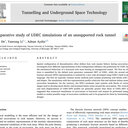First Report of Meloidogyne javanica on Sacha Inchi (Plukenetia volubilis) in China.
Cuvinte cheie
Abstract
Sacha inchi (Plukenetia volubilis L.) is a plant native to the rain forest of the Peruvian Amazon region. Because of its high protein and oil content as well as general nutritional quality, it is regarded as a promising new crop. Successfully introduced from South America in 2006, Sacha inchi has been cultivated in Xishuangbanna, in the southwestern region of Yunnan Province, China. During an investigation from August to October of 2012, severely stunted and withered Sacha inchi plants with rotted and galled root were observed in fields. Dissection of galled root tissue revealed mature root-knot nematode (Meloidogyne sp) females with body cavity filled with red color contents. The population was extracted and quantified from soil and root samples and identified to species by morphology, esterase (EST) isozyme phenotypes, and molecular characterization (3). Mean populations of 774 ± 251 Meloidogyne second stage juveniles (J2) per 100 cm3 of soil were extracted from the rhizosphere of symptomatic plants. These juveniles (n = 20) were characterized by length (410 to 480 μm) and hyaline tail terminus length (11 to 17 μm). Females (n = 20) were characterized by stylet length (14.1 to 17.3 μm) and the perineal pattern (rounded with fine striae, low to moderately high dorsal arch, and a distinct lateral field clearly demarcated from striae by parallel lines). The distinct lateral lines of the perineal pattern are diagnostic for this species (3). Gravid females were used for esterase (Est) isoenzyme analysis, and showed the J3 phenotype (relative migration rate [Rm] = 1.0, 1.25, and 1.4), typical of M. javanica, a species-specific phenotype used to differentiate this species from other members of Meloidogyne (1). Additionally, three single egg masses associated with red body females were extracted from the field-collected Sacha inchi roots and inoculated onto three potted tomato plants (Solanum lycopersicum 'Rutgers') and maintained in the greenhouse for 8 weeks until root galls and egg masses were visible. The observation of root-knot nematodes from tomato roots showed that all females' bodies were normal white, and the nematode species was also identified as M. javanica based on the esterase phenotype and the perineal pattern. It is suggested that the red body contents associated with females on Sacha inchi is the result of an unknown chemical compound acquired from that host. Although undetermined to species, Meloidogyne has been reported on Sacha inchi in Peru (2). To our knowledge, this is the first detection of M. javanica on this plant. Since M. javanica is widely distributed throughout the tropics, this root-knot nematode could be an important threat to the commercial cultivation of Sacha inchi. References: (1) R. M. Carneiro et al. Nematol. 2:645, 2000. (2) P. D. P. de Bienes. Sacha inchi (Plukenetia volubilis L.). Base de datos, 2010. (3) R. N. Perry et al. Root-Knot Nematodes. CABI. Wallingford, UK, 2009.



